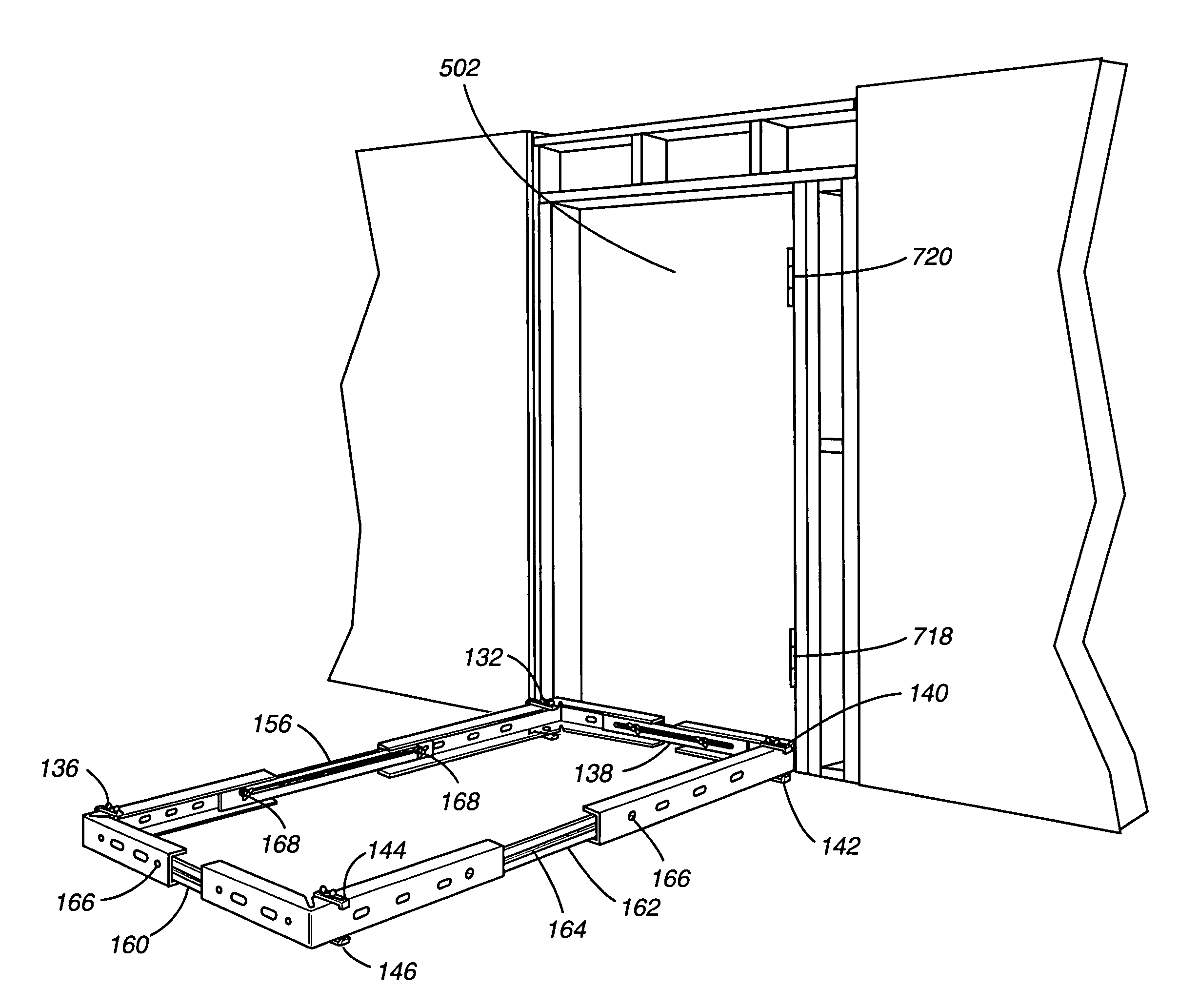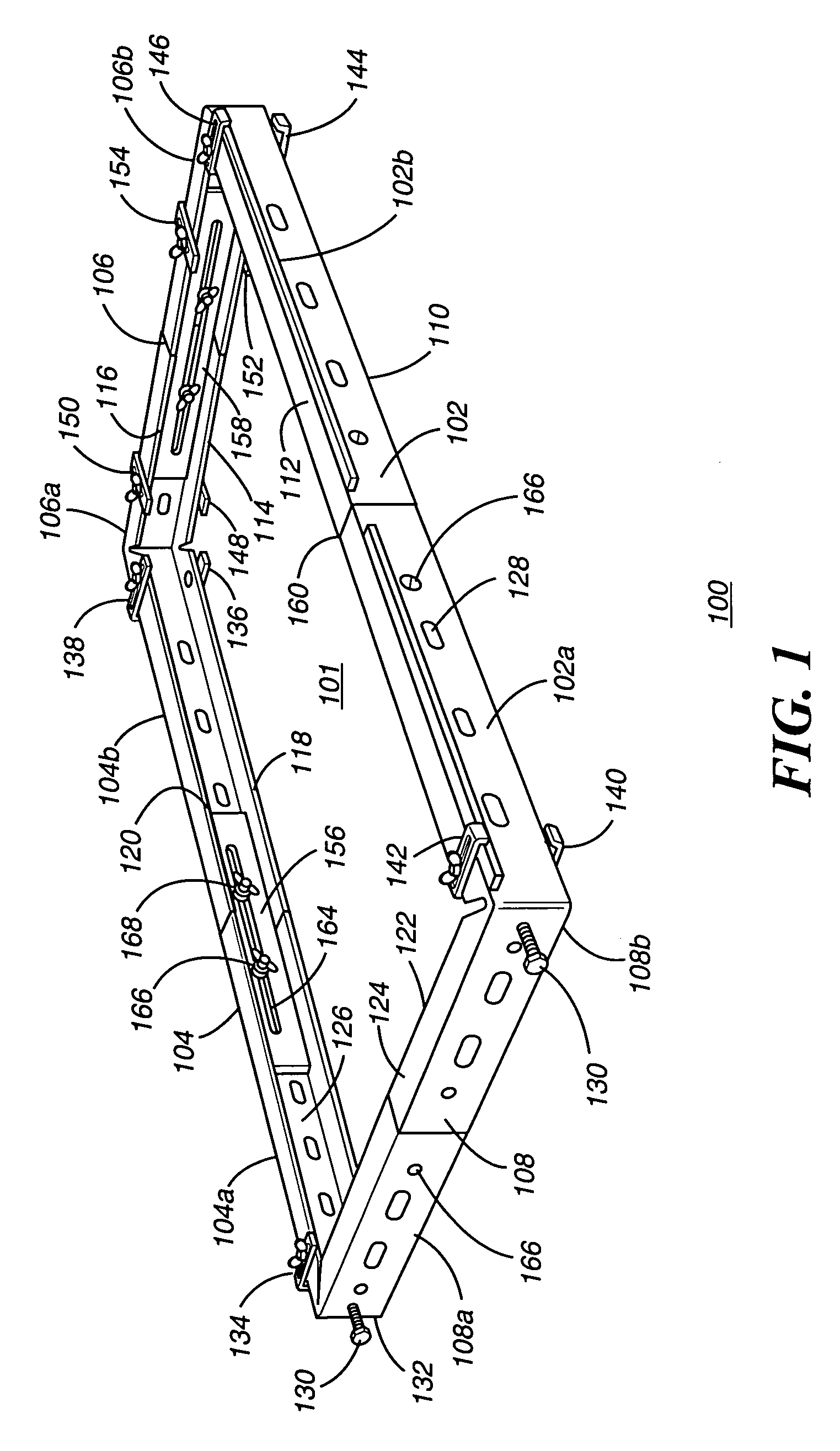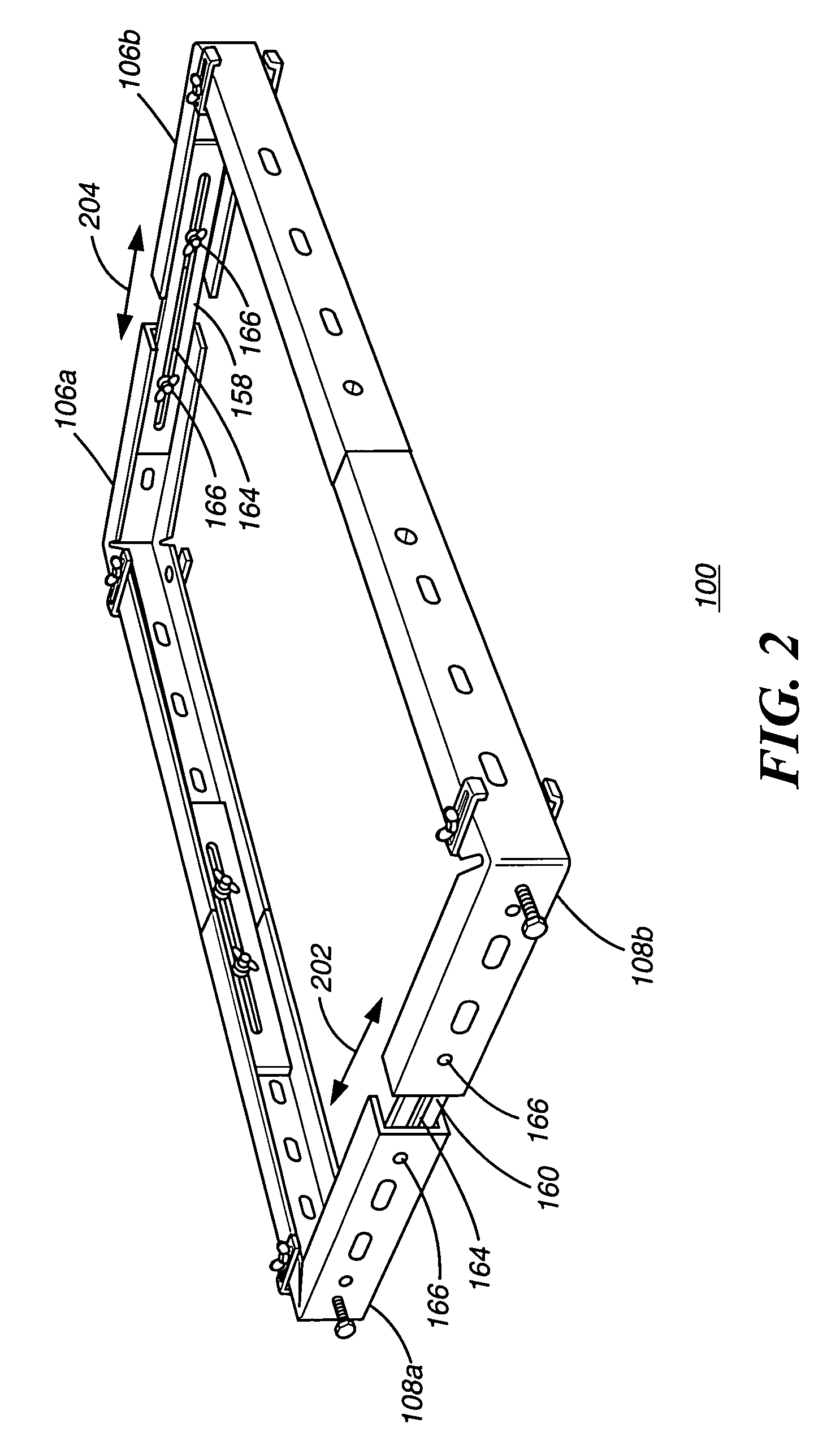Device for installing a pre-hung door
a pre-hung door and device technology, applied in the field of pre-hung doors, can solve the problems of large surface area for bonding, large surface area for frame material, prone to twisting, warping, bending, etc., and achieve the effect of facilitating frame alignment and increasing or decreasing the width and length of the rectangl
- Summary
- Abstract
- Description
- Claims
- Application Information
AI Technical Summary
Benefits of technology
Problems solved by technology
Method used
Image
Examples
Embodiment Construction
[0031]While the specification concludes with claims defining the features of the invention that are regarded as novel, it is believed that the invention will be better understood from a consideration of the following description in conjunction with the drawing figures, in which like reference numerals are carried forward.
[0032]Described now is an exemplary door installation device according to an exemplary embodiment of the present invention. Referring to FIG. 1, a door installation device 100 is shown in a horizontal position. The door installation device 100 includes a first side element 102, a second side element 104, a top element 106, and a bottom element 108. The elements 102, 104, 106, and 108 are attached to each other in a rectangular arrangement, where each element meets the other at a 90-degree angle. The elements 102, 104, 106, and 108 each have inwardly disposed wall elements 110, 112, 114, 116, 118, 120, 122, and 124. The sets of inwardly disposed wall elements 110&112...
PUM
| Property | Measurement | Unit |
|---|---|---|
| size | aaaaa | aaaaa |
| height dimension | aaaaa | aaaaa |
| width dimension | aaaaa | aaaaa |
Abstract
Description
Claims
Application Information
 Login to View More
Login to View More - R&D
- Intellectual Property
- Life Sciences
- Materials
- Tech Scout
- Unparalleled Data Quality
- Higher Quality Content
- 60% Fewer Hallucinations
Browse by: Latest US Patents, China's latest patents, Technical Efficacy Thesaurus, Application Domain, Technology Topic, Popular Technical Reports.
© 2025 PatSnap. All rights reserved.Legal|Privacy policy|Modern Slavery Act Transparency Statement|Sitemap|About US| Contact US: help@patsnap.com



